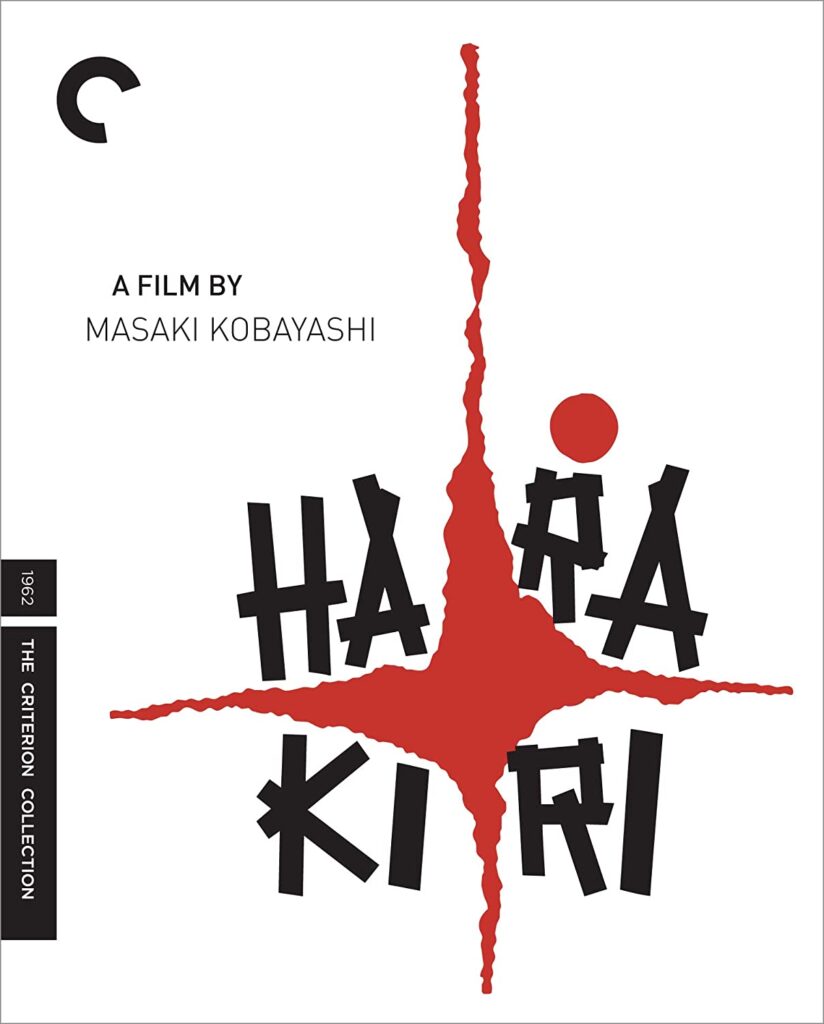
When a bedraggled masterless samurai, or ronin, approaches the estate of a large warrior clan and asks for permission to kill himself in their courtyard, he triggers a surprising face-off that reveals the depravity of the highly regimented samurai code. His initial request is met not with outright refusal or approval but instead with a story about another previous ronin who had made the exact same request. The clan suspected that ronin of graft, as many other clans around the nation typically extended employment or at least handouts to ronin appearing at their gates.
The film dissolves to flashback to recount the story of the first ronin in great detail, revealing the internal clan discussions about how to proceed as well as the chilling results of their decision. They agree to his demands, but when he begs for a delay of one or two days to go home, they flatly refuse and force him to proceed with the harakiri ceremony against his will, reasoning that he came to them requesting death without stipulations so he should follow through immediately like a man rather than renege on his request. Prior to the ceremony, they examine his sword and find it to be bamboo, indicating that he had no intention of killing himself and deepening their resolve that they will force this apparent scam artist’s death and further force him to use the bamboo blade to do it.
Flashing forward to the present timeline, ronin #2 listens to the tale with indifference and assures the court that he’s not a swindler, his sword is very real, and he has every intention of following through on his death wish as soon as they grant it. He also claims to have no knowledge of the previous ronin, although they both belonged to the same gigantic samurai clan before it was disbanded. Far be it from the tradition-bound samurai to refuse his request, so he’s shortly taken to their courtyard and presented with his short sword. And this is where the film gets really interesting.
As it turns out, ronin #2 has very deep knowledge of ronin #1, as he’s actually the dead ronin’s father-in-law. He recounts the dead ronin’s back story to the court, revealing how ronin #1’s wife and small child (aka ronin #2’s daughter and grandchild) were deathly ill and calling out the court on their refusal to let him go home to check on their health and say goodbye, flying into a rage about their inhumanity. He then proceeds to request by name a specific samurai of the court to be his second, basically the backup swordsman who beheads the ronin after the ronin has disemboweled himself. Upon learning that his requested second is unavailable, he proceeds to call for two other samurai who are also unavailable, leading him to tell stories in flashback about how he hunted them down and cut off their topknots, an embarrassing fate almost worse than death to proud samurai. He casually flings their topknots on the ground in front of the court, then begins a bloody skirmish as he seeks retribution against this clan who wronged his family while also carrying out his legitimate original request.
The film soars on the awesome performance by Tatsuya Nakadai, starting as the wholly believable scruffy ronin resigned to death and morphing into a fiery avenging angel as he throws accusations and blows around the courtyard. He recounts in a recent video interview on the disc that he himself felt that the role should have been played by the legendary Toshiro Mifune, and it’s completely understandable why but also inconceivable to imagine how Mifune could have topped Nakadai’s work here. It’s also amazing to learn that Nakadai was only 30 years old at the time of filming, playing a fully believable world-weary soul who seemed to be a good 20 years older thanks to his masterful acting.
The film is also a gorgeous sight to behold, staged so exquisitely and carefully that every frame looks like a work of art. On Blu-ray, that’s even more true, as its fine detail is enhanced via the lush hi-def presentation made possible by Criterion’s exacting restoration efforts. There’s still some visible dirt and scratches here and there, but on the whole it’s a beautiful presentation of this cinematic gem.
The bonus features include the previously mentioned interview with Nakadai, along with an interview with the screenwriter and an older interview with director Masahiro Shinoda. Nakadai’s segment is the most enlightening, but Shinoda’s self-deprecating interview is also worth watching.